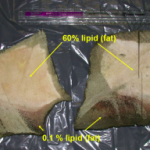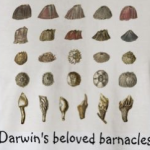![]() If you are regular reader to Deep Sea News, you may be used to the strangeness that is the deep ocean. In fact, you may be immune to oddity by now, half expecting quirkiness in place of something resembling the norm. You, dear reader, may even not think twice about the bizarre hydrothermal vents that line the mid-ocean ridges and back-arc basins of our deep sea. Forget everything you learned about hydrothermal vents. Sure, water seeps down into cracks in the ocean floor, gets heated when it comes into contact with superheated rocks above a magma chamber, rises up through fissures carrying dissolved metals and gases with it, exiting the seafloor at a vent opening where the hydrothermal fluid comes into contact with cold, deep seawater which immediately precipitates the dissolved metals, most notably pyrite and anhydrite. Yeah, we all know that story, its old hat. That was SO last millenium. The 21st century is all about carbonate chimneys.
If you are regular reader to Deep Sea News, you may be used to the strangeness that is the deep ocean. In fact, you may be immune to oddity by now, half expecting quirkiness in place of something resembling the norm. You, dear reader, may even not think twice about the bizarre hydrothermal vents that line the mid-ocean ridges and back-arc basins of our deep sea. Forget everything you learned about hydrothermal vents. Sure, water seeps down into cracks in the ocean floor, gets heated when it comes into contact with superheated rocks above a magma chamber, rises up through fissures carrying dissolved metals and gases with it, exiting the seafloor at a vent opening where the hydrothermal fluid comes into contact with cold, deep seawater which immediately precipitates the dissolved metals, most notably pyrite and anhydrite. Yeah, we all know that story, its old hat. That was SO last millenium. The 21st century is all about carbonate chimneys.

The coolest most amazingest thing is below the fold!
The Lost City is just plain strange as vents go. Hydrothermal vents at most other parts of the known deep sea are acidic, high temperature (up to 400+°C) environments with a chemical make up high in iron, manganese, sulfur and many trace metals. But a vent discovered a few years ago broke all the rules. The fluid coming out of this vent is alkaline (pH 9-11), a much lower temperature (28-90°C) and precipitates carbonate. Just a reminder: carbonate is the same material that shells and limestone caverns are made out of.
A brand new paper from Pruskurowski et al. in the journal Science describes some interesting results from analyses of the vent water at Lost City. Through careful collection and handling procedures, the authors were able acquire vent water in a pressurized vessel and analyze its chemical composition back in the lab. Surprisingly, the vent fluid contained alot of low-molecular weight hydrocarbons, such as methane, and H2 while being highly depleted in CO2 and dissolved metals. Being that the Lost City is off-axis of the Mid-Atlantic Ridge and contains fresher rock material than the seafloor further away from the ridge, what could have been causing the higher-than-typical concentrations of hydrocarbons? Hydrocarbons are typically produced when decaying organic matter (i.e. dead critters and plants) gets heated from contact with superheated rock from beneath the seafloor.
Hydrocarbons can also be produced abiogenically (without the intervention of biology) via the Fischer-Tropsch Type reaction:
This type of reaction is thought to occur in the mantle. There are 2 important pieces of evidence that hydrocarbons are produced abiogenically. Stable and radioactive isotopes are useful tracers to match an unknown to its potential source. Stable isotopes help to narrow down the potential sources an element can have or the paths that element takes throughout a system. For carbon, this is a relative measurement of the rarer 13C to the more abundant 12C. The stable isotope of carbon in the methane gas of Lost City was unlike any sources of carbon in the ocean. To make sure that the carbon is not coming from an oil and natural gas reservoir from deep within the crust, they measured the amount of radioactive 14C. This analysis tells you if there was any carbon that came from a living source as it is only present in organisms that respire. The hydrocarbon pool analyzed from the Lost City contained no 14C, cinching close the hypothesis that hydrocarbons from this deep sea vent has a biological origin.
So what does this have to with everything? Hydrocarbons form the backbones of cell walls and membranes. They are one of the first steps to building life. It seals in all the guts of a cell. Since methane and low molecular weight hydrocarbons can be synthesized de novo at some hydrothermal vents, certain people are getting uppity about renewed interest in the prospect of life’s origins at hydrothermal vents. But one must keep in mind that some of the building blocks being present in a system does not mean a new organism. This is a promising start and gives astrobiologists another lead on where to look for life in the universe and what sorts of geologic features might be worth investing resources in taking a closer look.
In the news: UK’s Telegraph, Nature News
Proskurowski, G., Lilley, M.D., Seewald, J.S., Früh-Green, G.L., Olson, E.J., Lupton, J.E., Sylva, S.P., Kelley, D.S.Abiogenic Hydrocarbon Production at Lost City Hydrothermal Field. Science, 319, 604-607. DOI: 10.1126/science.1151194






“Error – DOI Not Found”
but I wouldn’t be able to read it anyway, it’s not a plos thingie, isn’t it?
I think the paper came out before the DOI became active. Here is the link to the abstract and it is unfortunately NOT open access:
http://www.sciencemag.org/cgi/content/abstract/319/5863/604
A good friend of mine said when I linked him to this post:
“or http://depletedcranium.com/?p=368
problem: huge amounts of plastic bags clog seas
bad solution plan: have just a few people use fewer bags for a short while
better solution plan: make sure the bags, no matter how many there may be, *do not make it to sea*!
dispose of yours correctly, and use as many as you like”
That can’t have been the only analysis that was made, because the half-life of 14C is about 5700 years… after about 10 half-lives, it’s all gone, which is why coal and oil don’t contain any 14C (unless nearby sources of radioactivity have produced traces of it recently).
That can’t have been the only analysis that was made, because the half-life of 14C is about 5700 years… after about 10 half-lives, it’s all gone, which is why coal and oil don’t contain any 14C (unless nearby sources of radioactivity have produced traces of it recently).
David, you are right. 14C dating only goes back to 60,000 to 80,000 years. That statement was poorly worded and should be emended to be more clear. The point i failed to make successfully was that the source of hydrocarbons was from within the mantle and not influenced by organisms that have had some sort of contact with the atmosphere.